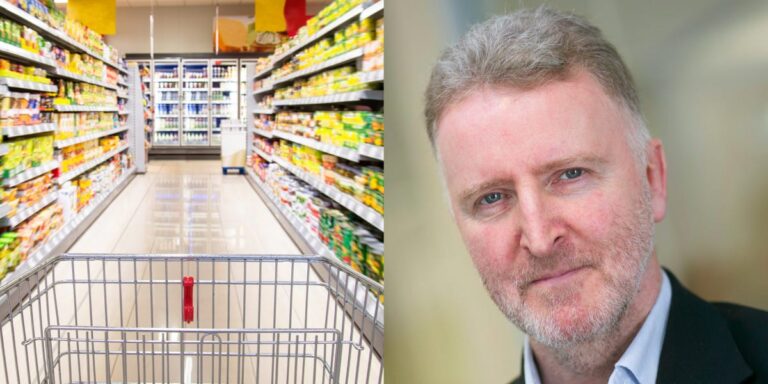- UPFs dominate the Western diet and are linked to serious health problems, including diabetes.
- Food companies are turning to sensory scientists to make ultra-processed foods irresistible.
- Professor and sensory expert Barry Smith eliminated UPF and lost weight effortlessly.
A professor of the senses, who once helped food giants create ultra-processed foods, lost weight effortlessly after eliminating them from his diet when he learned of their health risks.
Professor Barry Smith, director of the Institute of Philosophy at the University of London, told Business Insider that he has previously worked with Kellogg’s, Coca-Cola, and Ferrero, and that UPFs make up around 30 to 40% of his diet.
UPFs, which are made with ingredients and processes you won’t find in a regular kitchen, are a key part of the Western diet. They make up 73% of the U.S. food supply, according to a 2024 research paper from Northeastern University’s Network Science Institute, which has not been peer-reviewed.
These hyper-palatable foods contain the perfect ratio of fat to carbohydrates, making it nearly impossible to stop eating them, Smith said.
“These are foods that are so desired by our bodies that they actually slow down our satiety mechanisms,” he said. Research published in Nature Food in 2023 found that the more highly palatable foods were included in a meal, the more calories participants tended to consume overall.
Smith began reducing his use of UPFs around 2020 after Dr. Chris Van Tulleken, author of the best-selling book “Ultra Processed People,” which highlights the harms of industrial food processing, asked him about it on his podcast.
“They wanted me to explain to them all the sensory tricks and hacks of our senses that go into the manufacturing and formatting of food that cause us to consume, desire and crave these foods,” Smith said.
It made him more aware of health issues (a study published in February in The BMJ linked UPFs to a higher risk of 32 health problems, including type 2 diabetes, depression and cardiovascular disease) and got him thinking about his work.
“I realized that, in some unconscious way, I was perhaps aiding and abetting these actions of the food industry and I began to think, no, I just couldn’t do that in good conscience,” he said.
Food companies hire sensory scientists and chemists to help make their ultra-processed foods irresistible, but they tend not to eat the products they help create, Smith says.
“They know what design, formatting, industrial transformation means. So they don’t necessarily want to eat them themselves,” he explains.
Smith no longer works with UPF companies (although he said he never gave advice on how to prepare foods that people can’t stop eating).
He shared three things that helped him change his diet.
Take a break from UPFs first (and you may not want to go back)
The more Smith learned about the health risks of UPFs, the less he wanted to eat them, so he decided to eliminate them altogether.
He realized that he didn’t like the physiological effect they had on him, and over time he began to actively hate them.
“They seem too intense, too perfumed, too garish in a way,” he said.
And he noticed he felt better because of it. “I deliberately cut out ultra-processed foods because of the negative effects they could have on my health. And then I found out that the effects were actually beneficial,” he said.
He felt more energetic, fuller for longer, and able to stop eating when he felt full. He also lost weight effortlessly.
He thinks it’s because he was addicted to UPFs before, rather than actually enjoying them, and taking a break allowed him to see them for what they were.
“By eliminating that craving, you end up having to resort to a natural regulation of food intake that keeps you from overeating,” Smith says. “These aren’t necessarily foods that we love more than anything else, but they are foods that we want and can’t help but want.”
While it worked for Smith, quitting cold turkey isn’t for everyone. As registered dietitian Linia Patel previously explained to BI about reducing FPU, any new habit involves changing your behavior, so it’s helpful to break down what works for you.
Check food labels
Smith said checking nutrition labels on foods helps him choose minimally processed products.
He has discovered that even some products that might be considered “perfectly acceptable,” such as a can of red beans from the supermarket, can contain gelling or stabilizing agents. He gets around this problem by opting for organic versions.
Unfortunately, this shows how healthy eating can depend on a person’s food environment and socioeconomic status.
Find some really tasty alternatives
As a professor of sensory science, Smith is interested in the multisensory experience of tasting. “How food looks, how it smells, how it feels on your fingers, even the sound of food when you break it or shake it. All of these things are part of the tasting and eating experience,” he said.
This is essential to consider when moving away from UPFs that were manufactured to be delicious, he said.
“You’re not going to convince people to give up ultra-processed foods by telling them it’s bad for them. It’s about flavor,” he said.
Although nutritious, vegetables can be pretty boring, he said, but there are plenty of ways to make them interesting, such as roasting, pickling and fermenting them.
“You have to make them really tasty so people realize that I can actually make something reasonably cheap and reasonably good that I’m actually going to enjoy eating,” he said.


